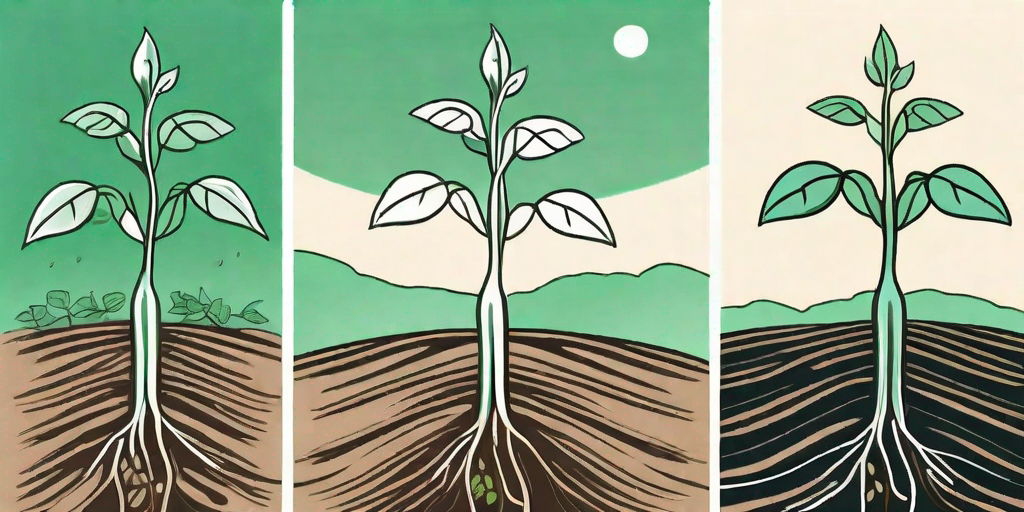
Pole beans, those lofty legumes that reach for the sky, are a fantastic addition to any garden. They're not just a pretty face, either. These beans are a powerhouse of nutrition, and they're as fun to grow as they are to eat. But how do you go from a humble seed to a towering beanstalk? Well, sit back, relax, and let's embark on this bean-filled journey together.
The Basics of Pole Beans
Before we dive into the nitty-gritty of bean cultivation, let's get to know our subject a little better. Pole beans, also known as runner beans, are a type of vining bean plant. Unlike bush beans, which grow in a compact bush-like shape, pole beans grow vertically, using supports to climb towards the sun. They're a bit like the Jacks of the bean world, always aiming for the sky.
There are many varieties of pole beans, each with its own unique flavor and growth habits. Some popular varieties include the Kentucky Blue, the Scarlet Runner, and the Purple King. But no matter which variety you choose, the basic growing process remains the same.
Planting Your Beans
Now that we've got the introductions out of the way, it's time to get our hands dirty. Planting pole beans is a simple process, but it does require some preparation.
Choosing the Right Spot
The first step in planting pole beans is choosing the right spot. These beans love the sun, so you'll want to pick a location that gets at least six hours of sunlight each day. They also need well-drained soil, so avoid areas where water tends to pool.
Another thing to consider is the support structure. Pole beans need something to climb on, whether it's a trellis, a fence, or even a tall friend who doesn't mind standing very still for a long time. The support should be sturdy and at least six feet tall.
Preparing the Soil
Once you've picked the perfect spot, it's time to prepare the soil. Pole beans prefer a slightly acidic to neutral pH, so you may need to amend your soil accordingly. They also appreciate a good helping of compost or well-rotted manure, which will provide them with the nutrients they need to grow.
When the soil is ready, dig a trench about two inches deep. Space your seeds about four inches apart, then cover them with soil. Water well, and then sit back and wait for the magic to happen.
Caring for Your Beans
Planting the beans is just the beginning. Now comes the fun part: watching them grow. But like any plant, pole beans need some TLC to reach their full potential.
Watering and Feeding
Pole beans need regular watering, especially during dry spells. Aim for about an inch of water per week, but be careful not to overwater. Too much water can lead to root rot and other problems.
As for feeding, a side dressing of compost or well-rotted manure every few weeks should do the trick. If your plants seem to be struggling, you can also add a balanced organic fertilizer.
Supporting the Vines
Remember that support structure we talked about earlier? Now's the time to put it to use. As your beans start to grow, they'll need something to climb on. Gently guide the vines onto the support, and they'll do the rest.
Keep an eye on your plants as they grow. If they start to outgrow their support, you may need to add additional structure. After all, we wouldn't want our beanstalks to topple over, would we?
Harvesting Your Beans
After all that hard work, it's finally time to reap the rewards. But when is the right time to harvest your beans? And how do you do it without damaging the plant?
When to Harvest
The best time to harvest your beans is when they're young and tender. This is usually when they're about the size of a pencil. If you wait too long, the beans will become tough and stringy.
Keep in mind that pole beans are a continuous harvest plant. This means that the more you pick, the more beans the plant will produce. So don't be shy about picking those beans!
How to Harvest
Harvesting pole beans is a simple process. Simply grasp the bean near the top, and gently pull it away from the vine. Be careful not to yank or tug, as this can damage the plant.
If you find that the beans are tough to remove, you can use a pair of garden shears to cut them off. Just be sure to leave a small stub of stem on the bean to prevent rot.
Common Questions About Growing Pole Beans
Can I grow pole beans in a pot?
Absolutely! Pole beans are a great choice for container gardening. Just make sure to choose a large pot and provide a suitable support for the vines to climb on.
Do pole beans need a lot of space?
While pole beans do grow vertically, they still need plenty of room to spread out. A good rule of thumb is to allow about two square feet of space per plant.
How long do pole beans take to grow?
Most varieties of pole beans will start to produce beans about 60 to 70 days after planting. However, this can vary depending on the specific variety and growing conditions.
Conclusion
And there you have it, folks! Everything you need to know to grow pole beans like a pro. From choosing the right spot and preparing the soil, to caring for your plants and harvesting the beans, it's a journey that's as rewarding as it is fun. So why not give it a try? After all, who wouldn't want a beanstalk in their backyard?











